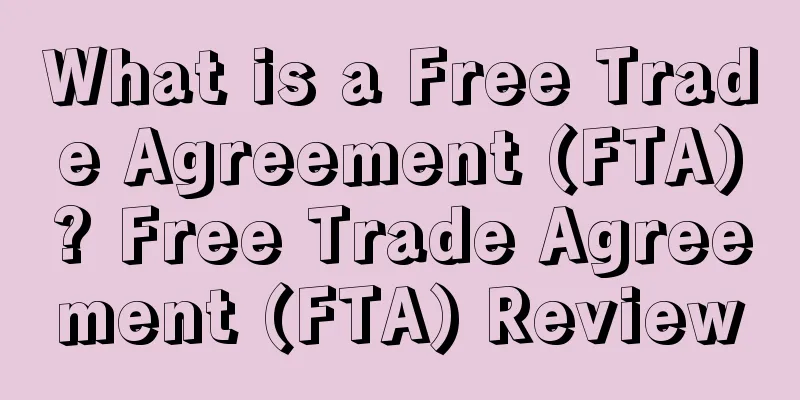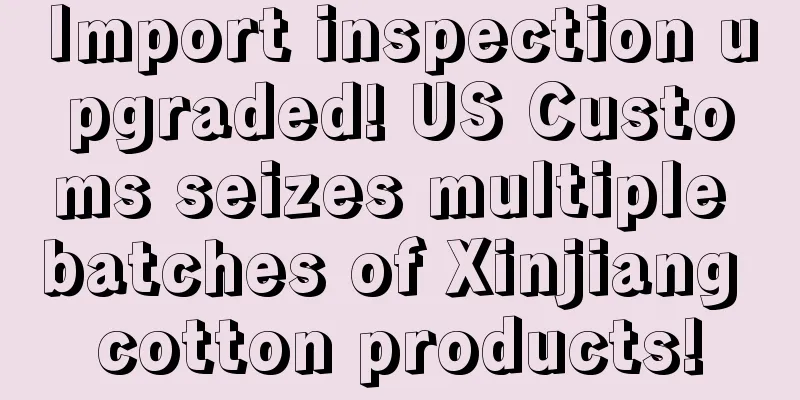What is a Free Trade Agreement (FTA)? Free Trade Agreement (FTA) Review

|
A Free Trade Agreement is a legally binding contract between two or more countries that aims to promote economic integration. One of its goals is to eliminate trade barriers and allow products and services to flow freely between countries. The trade barriers referred to here may be tariffs or complicated rules. Introduction A Free Trade Area (FTA) usually refers to two or more countries or regions that, through the signing of a free trade agreement, mutually cancel tariffs and non-tariff barriers on most goods, cancel market access restrictions on most service sectors, and open up investment, thereby promoting the free flow of goods, services, capital, technology, personnel and other production factors, achieving complementary advantages and promoting common development. Sometimes, it is also used to describe one or more regions within a country that have eliminated tariffs and trade quotas and have less administrative intervention in the economy. As of January 22, 2014, 15 local free trade zones have obtained approval from the State Council and entered the stage of joint research by multiple ministries and commissions. On January 24, 2014, the head of the Department of International Economic and Trade Relations of the Ministry of Commerce of the People's Republic of China stated that except for Shanghai, the State Council of the People's Republic of China has not yet approved the establishment of any other free trade park (port) area. Free trade zones in a broad sense include: China-Japan-Korea Free Trade Area (China, Japan, and South Korea), North American Free Trade Area (NAFTA, including the United States, Canada, and Mexico), Free Trade Area of the Americas (FTAA, including 34 countries in the Americas), Central European Free Trade Area (CEFTA, including Poland, Hungary, the Czech Republic, Slovakia, Slovenia, Romania, and Bulgaria), China-ASEAN Free Trade Area (AFTA, including the ten countries of the Association of Southeast Asian Nations), EU-Mexico Free Trade Area, China-ASEAN Free Trade Area, etc. Free trade zones in a narrow sense: such as the Colon Free Trade Zone in Panama, the Hamburg Free Trade Zone in Germany, and the No. 1 Foreign Trade Zone in New York, USA. Free trade agreements are gradually explored by various countries in order to circumvent the difficulties of WTO multilateral agreements and to open up other ways to promote trade liberalization. They are agreements reached between independent tariff entities on trade liberalization and related issues in a voluntary manner. In WTO documents, FTAs, along with preferential trade agreements (PTAs) and customs union agreements (CUAs), are all included in the scope of RTAs (Regional Trade Agreements). In reality, because many FTAs may not reach complete free trade in terms of the content of the agreement, there is a tendency to mix FTAs and RTAs in concept. Sometimes FTAs and RTAs also refer to free trade zones or quasi-free trade zones based on certain trade agreements. Under a free trade agreement, goods from the partner countries can enjoy import tariff and duty reductions. Whether in the importing or exporting countries, free trade agreements help simplify customs procedures. When there are unfair trade practices between the agreement countries, free trade agreements can also assist traders in remedying them. Domestic taxes and fees, such as value-added tax and consumption tax, are not affected by the free trade agreement. Only goods originating from a country that is a member of a free trade agreement are eligible to benefit from the free trade agreement. Signing Status China At present, my country has signed free trade agreements with the Association of Southeast Asian Nations, Chile, Pakistan, New Zealand, Singapore, Peru, Costa Rica, Iceland, Switzerland, South Korea, Australia, Maldives and Georgia. On November 18, 2005, China and Chile signed a free trade agreement. On November 24, 2006, China and Pakistan signed a free trade agreement. The free trade agreement signed with New Zealand on April 7, 2008 is the first free trade agreement signed by my country with a developed country. On October 23, 2008, China and Singapore signed a free trade agreement. On November 19, 2008, China and Peru signed a free trade agreement. On April 15, 2013, China and Iceland signed a free trade agreement, which is the first free trade agreement signed by my country with a European country. On July 6, 2013, China and Switzerland signed the China-Switzerland Free Trade Agreement. It is the first free trade agreement reached between my country and the European continent and the world's top 20 economies. Switzerland will immediately implement zero tariffs on 99.7% of China's exports, and China will eventually implement zero tariffs on 84.2% of Switzerland's exports. On November 10, 2014, Chinese President Xi Jinping and South Korean President Park Geun-hye met in Beijing, and both sides confirmed that the substantive negotiations on the China-ROK Free Trade Area had been concluded. On November 17, the conclusion of the substantive negotiations on the China-ROK Free Trade Area (FTA) negotiations helped to make progress on the China-Japan-ROK Free Trade Area. On February 25, 2015, China and South Korea completed the initial signing of the entire text of the China-ROK Free Trade Agreement and confirmed the contents of the agreement. So far, the China-ROK Free Trade Area negotiations have been completed. Others: Australian Prime Minister Kevin Rudd, who visited China in 2008, was dissatisfied with the delay in signing a free trade agreement between Australia and China, and he will urge China to speed up the negotiations. In addition, South Korean President Lee Myung-bak hopes to make the free trade agreement one of the main topics during his visit to China in May. He publicly stated that Northeast Asian countries should sign a free trade agreement with China, Japan and South Korea as the core. The Association of Southeast Asian Nations (ASEAN) and China signed an agreement on Monday to establish the world's largest free trade zone by 2010. On June 1, 2015, Chinese Minister of Commerce Gao Hucheng, on behalf of the Chinese government, signed the China-ROK Free Trade Agreement in Seoul with South Korean Minister of Trade, Industry and Energy Yoon Sang-jik. On June 17, 2015, China and Australia signed a free trade agreement. On November 30, 2015, the South Korean National Assembly voted to approve the China-South Korea Free Trade Agreement, making it the largest FTA reached between China and a foreign country to date. Since the China-ROK and China-Australia free trade agreements officially came into effect and implemented the first tariff reduction on December 20, 2015, Xiamen Tongan Inspection and Quarantine Bureau has issued a total of 4 China-ROK certificates of origin and 19 China-Australia certificates of origin, with a total value of US$600,000, saving companies US$48,000 in tariffs. According to reports, the second tariff reduction of China-ROK and China-Australia free trade agreements will be implemented from January 1, 2016, covering a wider range of products and benefiting more enterprises. In addition, enterprises are currently applying for China-ROK and China-Australia certificates of origin free of charge. For goods in transit before December 20, the China-ROK certificate of origin can be reissued before March 19, 2016, and the China-Australia certificate of origin can be reissued before June 19, 2016. The China-Georgia Free Trade Agreement launched negotiations in December 2015, was signed in May 2017, and came into effect and implemented on January 1, 2018. On November 29, 2017, China and the Maldives signed a free trade agreement. North America In 1989, the United States and Canada signed the North American Free Trade Agreement. On February 5, 1991, the presidents of the United States, Canada and Mexico announced at the same time that representatives of the three governments would formally start negotiations on a trilateral free trade agreement in June of the same year. After 14 months of negotiations, on August 12, 1992, the United States, Canada and Mexico signed a trilateral free trade agreement, the North American Free Trade Agreement. On January 1, 1994, the agreement officially came into effect. The agreement decided to gradually eliminate trade barriers and implement the free flow of goods and services within 15 years from the date of entry into force, so as to form the world's largest free trade group with 360 million consumers and an annual gross national product of more than 6 trillion US dollars. In May and June 1993, the Canadian Parliament passed the agreement. In November of the same year, the US and Mexican Congresses passed the agreement. In December of the same year, the US President signed the agreement, making it officially a US law. The North American Free Trade Area, which was created by the signing of the North American Free Trade Agreement, greatly simplified the relevant procedures for import and export trade and investment among the three countries, and promoted regional trade and economic development. From December 1994, leaders of the United States, Canada, Mexico and Chile decided to start negotiations on Chile's accession to the North American Free Trade Agreement. On November 18, 1996, Canada and Chile formally signed the Free Trade Agreement between the two countries in Ottawa. The agreement officially came into effect on June 2, 1997. The agreement will serve as a bridge for Chile to eventually join the North American Free Trade Agreement. From August 1996, Honduras, Guatemala and El Salvador also began negotiations to join the North American Free Trade Agreement through Mexico. Hong Kong, Chile Hong Kong and Chile signed a bilateral Free Trade Agreement on September 7, 2012, marking a new milestone in trade and investment cooperation between the two places and expanding Hong Kong's free trade agreement network to the Americas. Under the Agreement, Chile will eliminate import tariffs on goods originating in Hong Kong, which account for about 88% of its tariff lines, and will gradually eliminate an additional 10% of tariff lines within three years. In terms of trade in services, Hong Kong service suppliers will enjoy legally protected market access and national treatment in a wide range of service sectors in the Chilean market. The Agreement will provide legally protected national treatment to investors of both sides in designated non-service sectors. To strengthen investment flows between Hong Kong and Chile, both sides agreed to negotiate a more comprehensive Investment Promotion and Protection Agreement. The Agreement also contains provisions to promote competition, facilitate participation of both parties in each other's government procurement markets, strengthen cooperation in customs clearance procedures and protect the environment. Under the Agreement, Hong Kong and Chile will strengthen cooperation on sanitary and phytosanitary measures and technical barriers to trade to minimize trade barriers and promote bilateral trade. Witnessed by Financial Secretary John Tsang, Chilean President Miguel Juan Sebastián Piñera Echenique and other guests, Secretary for Commerce and Economic Development Gregory So and Chilean Minister of Foreign Affairs Alfredo Moreno signed the Agreement at a ceremony in Vladivostok, Russia today. The Agreement will enter into force on a date to be mutually agreed upon, after Hong Kong and Chile have completed the necessary local procedures. Hong Kong, China, Australia On March 26, 2019, Australia and Hong Kong, China signed the Australia-Hong Kong Free Trade Agreement and related investment agreement in Sydney, marking a new chapter in the mutually beneficial economic and trade relations between Australia and Hong Kong. UK, South Korea On August 22, 2019, the United Kingdom and South Korea officially signed a free trade agreement, and the two countries will continue to engage in free trade after the United Kingdom leaves the European Union. United Kingdom, Australia On December 16, 2021, the UK and Australia officially signed a "historic" free trade agreement (FTA). This is also the first trade agreement that the UK has negotiated from scratch and finally reached after Brexit. Social Impact First, free trade agreements ultimately promote the development of international trade by reducing transaction costs and circulation expenses, through trade liberalization and facilitation, and by promoting the emergence of new FTAs. Secondly, free trade agreements promote international investment and optimize the world's industrial structure and resource allocation. Thirdly, free trade agreements can promote the continued development and deepening of economic cooperation relations among members on the basis of trade liberalization, which may have a positive impact on the emergence of regional common currencies, world common currencies, the strengthening of the common economic interests of countries around the world, and even the process of achieving peaceful integration of world politics. |
>>: What is the Most Favored Nation Treatment? Most Favored Nation Treatment Evaluation
Recommend
What is Amazon Poland (Amazon.pl)? Amazon Poland (Amazon.pl) Review
Amazon Poland (Amazon.pl) is a local e-commerce we...
Amazon has issued a number of new rules! New rules for listings! These types of sellers should pay attention
Amazon sellers have been looking forward to the g...
“Manipulate” keyword placement to seize Prime Day traffic wealth
May is about to pass, and Amazon buyers and seller...
What is Facebook Pay? Facebook Pay Review
Facebook Pay is a mobile payment service launched ...
Stop selling products with a low average order value of 9.9. Products with a high average order value are the future trend!
Why do we need to make high-priced products? Disad...
What is SHEIN? SHEIN Review
SHEIN is a cross-border B2C Internet company focus...
What is Amazon Launchpad? Amazon Launchpad Review
Amazon Inventor Program is a unique program that b...
Costco enters the fast fashion industry with TikTok's popularity exceeding 1.8 billion!
It is learned that users on TikTok and other socia...
What is SEOquake? SEOquake Review
SEOquake is a free plugin that provides you with k...
15 common methods to catch copycat sellers on Amazon
Common forms of follow-selling 15 common methods ...
[DNY123 Cross-border Morning News] Shopee Brazil site SLS-Standard Express shipping fee adjustment, Vietnam plans to impose taxes on e-commerce sellers
Monday, June 21 《DNY123》>>>Cross-border M...
A cross-border company was avoided? The basic salary was deducted and became negative, and the seller wanted to switch to a service provider!
▶ Video account attention cross-border navigation ...
How do Amazon sellers promote their products outside of their website on Facebook?
What to do if there are no orders for a new listin...
What is Doubi Forum? Doubi Forum Review
MR.Q Funny Forum is committed to building "th...
What is HKTVmall? HKTVmall Review
HKTVmall is a daily life shopping platform that br...









